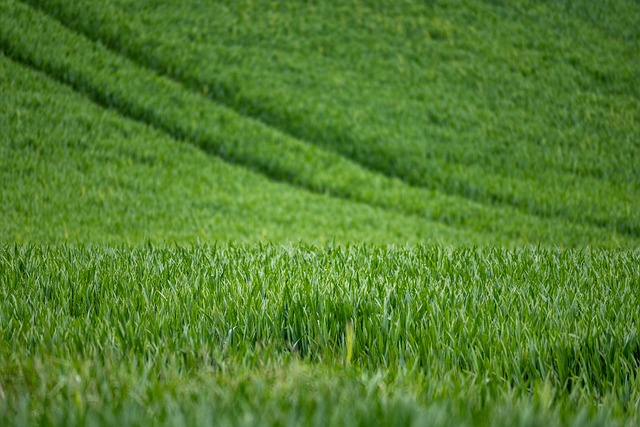Tree trimming is essential for maintaining landscape health and property value, best done in spring. Efficient yard waste removal and recycling strategies, including composting and repurposing materials, minimize environmental impact and enhance sustainability. Utilizing dedicated community programs and modern equipment promotes a greener approach to yard care, reducing costs and contributing to soil health while navigating the challenges of debris management.
Looking to keep your property neat and safe? Understanding the importance of regular tree trimming and efficient debris removal is crucial. This comprehensive guide delves into essential practices, from recognizing the optimal timing for tree trimming to exploring eco-friendly recycling options for yard waste. We provide effective methods for managing debris, offer tips on choosing the right tools, and share insights for sustainable, cost-effective yard maintenance. Implement these strategies to enhance your outdoor space while minimizing environmental impact.
- Understanding Tree Trimming: When and Why It's Necessary
- The Importance of Proper Debris Removal After Trimming
- Effective Methods for Yard Waste Management
- Exploring Recycling Options for Tree Trimming Debris
- Choosing the Right Tools for Efficient Trimming and Cleanup
- Tips for Sustainable and Cost-Effective Yard Maintenance
Understanding Tree Trimming: When and Why It's Necessary

Tree trimming is an essential aspect of maintaining a healthy and aesthetically pleasing landscape, which can significantly impact your property’s value. It involves selectively removing dead, diseased, or damaged branches to promote growth, enhance the tree’s shape, and prevent potential hazards. Regular tree trimming isn’t just about aesthetics; it plays a crucial role in ensuring the long-term health of trees and shrubs.
The timing of tree trimming is critical. Spring is often considered the best time for most species as new growth begins, allowing the tree to heal quickly. However, some trees require trimming during specific seasons due to their natural growth patterns. Proper timing prevents unnecessary stress on the tree and promotes better recovery. Additionally, understanding when to trim helps in managing yard waste removal and recycling efforts, ensuring minimal environmental impact and efficient disposal of pruned branches.
The Importance of Proper Debris Removal After Trimming

Proper debris removal after tree trimming is an essential step that often gets overlooked, but it plays a crucial role in maintaining a healthy yard and even contributing to environmental sustainability. When trees are trimmed, a significant amount of waste is generated, including branches, leaves, and sometimes even large logs. If this yard waste is not managed correctly, it can lead to numerous issues. For instance, left untouched, debris can become a fire hazard, especially in dry seasons or areas prone to wildfires. Furthermore, decaying organic matter may attract pests and create an unsightly environment, reducing the overall aesthetics of your property.
Effective debris removal and recycling practices offer multiple benefits. Firstly, it ensures that your yard is safe from potential risks associated with accumulated waste. Secondly, many communities have recycling programs or compost facilities for tree trimmings, allowing for the reduction of landfill waste and promoting eco-friendly practices. This process can transform yard waste into valuable resources like mulch or compost, which are excellent amendments for soil health and plant growth. By implementing proper debris removal techniques, homeowners not only maintain a tidy outdoor space but also contribute to a greener and more sustainable environment.
Effective Methods for Yard Waste Management

Effective yard waste management involves a combination of strategic trimming and efficient debris removal. For tree trimming, professionals recommend a proactive approach, scheduling regular cuts to maintain the health and aesthetic appeal of your trees. This not only prevents overgrowth but also reduces the volume of debris generated. When it comes to debris removal, recycling is an eco-friendly game changer. Many communities offer curb-side collection for compostable materials like leaves, grass clippings, and wood chips, which can be transformed into nutrient-rich soil amendments.
Complementing these practices with on-site composting for organic waste further reduces the amount of material sent to landfills. This holistic approach to yard waste management not only benefits the environment but also promotes a vibrant and sustainable landscape.
Exploring Recycling Options for Tree Trimming Debris

Many homeowners often consider tree trimming as a necessary task for maintaining their property’s aesthetics, safety, and overall health. However, one significant challenge that arises from this process is the substantial amount of debris generated, primarily consisting of branches, leaves, and sometimes even large trunks. Efficient yard waste removal and recycling become essential aspects of responsible landscaping.
Instead of solely relying on traditional methods of debris disposal like burning or landfilling, which can have environmental implications, exploring recycling options offers a sustainable and eco-friendly alternative. Many communities now provide dedicated programs for yard waste collection and recycling, allowing homeowners to divert their tree trimming debris from landfills. These programs often include the composting of organic materials, which can enrich local soil, and the chipping of larger branches for use in various applications like landscaping or fuel for specific industrial processes.
Choosing the Right Tools for Efficient Trimming and Cleanup

When it comes to tree trimming and debris removal, selecting the appropriate tools is half the battle won. The right equipment can significantly enhance efficiency and safety during yard work. For instance, using a high-quality, well-maintained chainsaw for tree trimming ensures clean cuts, reducing the risk of splitting or damaging branches. Additionally, investing in a powerful yet portable vacuum or chipper can efficiently collect and manage trimmings, leaves, and other debris, making yard waste removal and recycling a smoother process.
Proper tool choice also promotes sustainability practices. Many modern tools are designed with recycling in mind, featuring components that can be easily separated for disposal or repurposing. Moreover, some equipment allows for the conversion of organic waste into compost, further reducing environmental impact. By considering these options, you not only make yard work tasks more manageable but also contribute to a greener approach to tree care and debris management.
Tips for Sustainable and Cost-Effective Yard Maintenance

Maintaining a lush yard doesn’t have to be an energy-draining, costly endeavor. For tree trimming and debris removal, consider adopting sustainable practices that benefit both your budget and the environment. One effective strategy is to recycle yard waste whenever possible. Instead of bagging clippings and leaves for disposal, compost them in your own backyard to create nutrient-rich soil amendments. This reduces the need for synthetic fertilizers and minimizes local yard waste sent to landfills.
Additionally, repurpose pruned branches and tree trunks by turning them into mulch or wood chips. Mulch enriches soil structure, suppresses weeds, and conserves moisture, while wood chips can serve as a natural, long-lasting pathing material. Local recycling programs often accept these materials, further reducing your costs for yard maintenance. Embracing these sustainable practices not only saves you money but also contributes to a greener, more eco-friendly approach to yard care.
Tree trimming is an essential part of maintaining a healthy yard, but it generates significant debris. Proper debris removal and effective yard waste management not only ensure your lawn looks neat but also contribute to sustainability. By exploring recycling options for tree trimming debris, you can reduce environmental impact while keeping costs down. Using the right tools and implementing sustainable practices will make yard maintenance more efficient and cost-effective, ensuring a beautiful and eco-friendly outdoor space.



